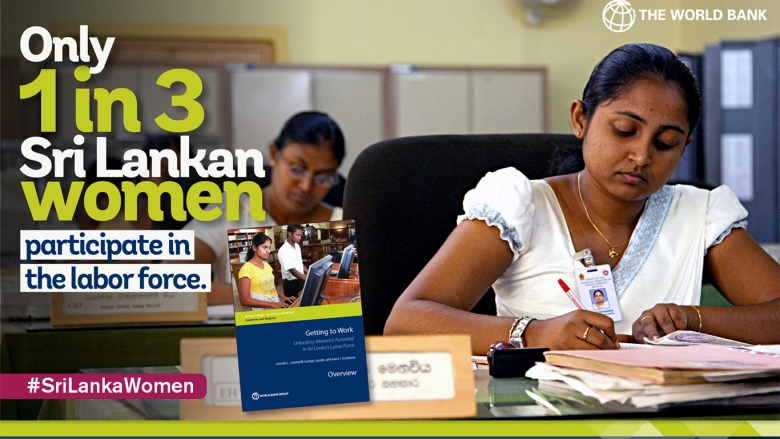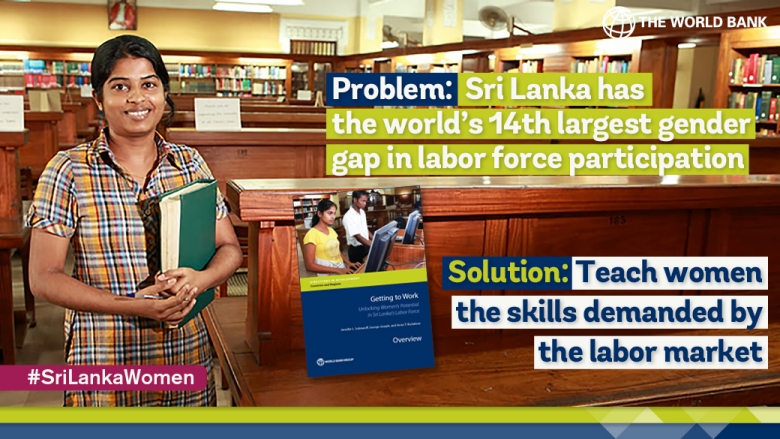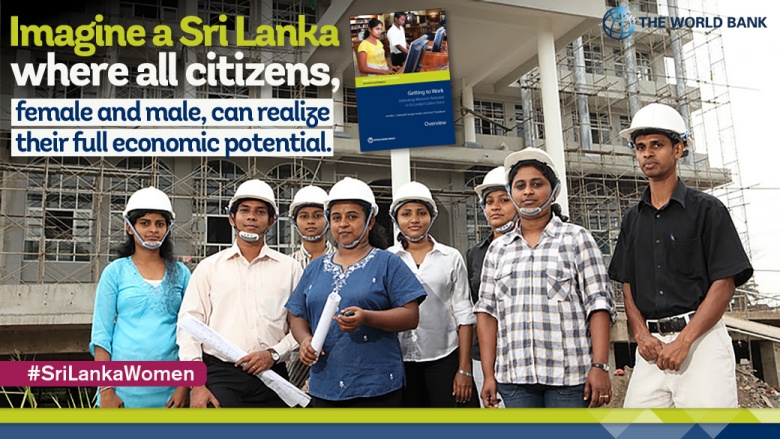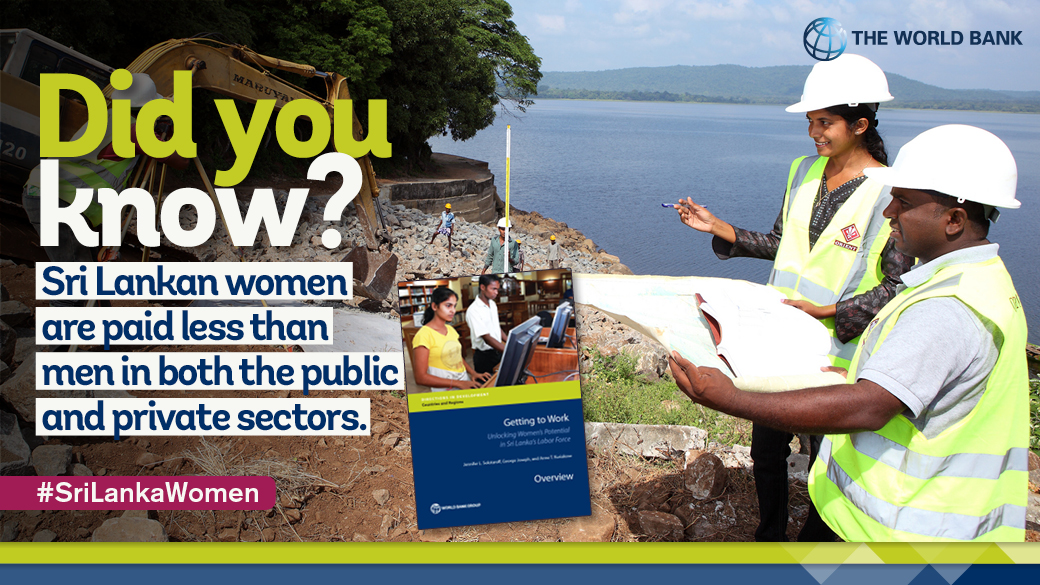Sri Lanka lags behind in women’s participation in the workforce, especially compared to other middle-income countries
A new report from the World Bank, Getting to Work: Unlocking Women’s Potential in Sri Lanka’s Labor Force, confirms that for women marriage can function as a deterrent to participation in labour markets. It can drastically lower a women’s odds—by 26 percentage points—of becoming a paid employee, while for men it slightly increases the odds, by 2.5 percentage points.
For women like Pushpa, having young children only increases the pressure, and reduces their chances of becoming a paid employee. Aside from childcare, other household roles and responsibilities fall disproportionately on women too. Meanwhile, social norms against women’s mobility outside the home, especially for commuting, exacerbate the gender gap in labour market outcomes.
It all adds up. Even as the economy expanded, female labour force participation (FLFP) declined from 41 percent in 2010 to 36 percent in 2016—in fact, Sri Lanka has the 14th-largest gender gap in labour force participation globally. Men’s participation remained above 75 percent during the same time period.
Within the wider group are small communities who are particularly vulnerable. As noted in the report, a worrying trend has poorer and less educated women falling further behind their more educated and wealthier counterparts. In addition, war widows and female heads of household appear to have become increasingly vulnerable in labour markets since the civil war and are significantly less likely than other women to become paid employees.
Low participation, persistent wage disparities and high unemployment
Overall, Getting to Work finds that women’s experiences in Sri Lanka’s labour market remain characterized by low participation, high unemployment and persistent wage disparities between the sexes. The report notes that women are not acquiring the proper skills demanded by job markets.
Notions of what is gender appropriate follow girls all their lives, determining among other things what they study (more often enrolling in humanities and arts courses rather than acquiring technical skills) and what jobs they apply for.
It all adds up to a human-capital mismatch, where women at all levels of educational attainment find it harder with each year to secure high-skill and higher-paying jobs. Examining the data provides further insights, including that wage gaps are shrinking over time, but that it is women under thirty, essentially those at the very start of their careers, who are most likely to struggle with unemployment.
Primary research done for Getting to Work confirms that employers actively discriminate by gender to a much smaller degree than employees suspect. Yet, this may not be the case for promotions—occupational segregation endures, and especially when it comes to high-skill and management jobs, men continue to dominate.
Reducing barriers to women’s participation
Going forward, the report recommends four priority areas to focus on, each designed to address different barriers to women gaining paid employment and then continuing to thrive in the workplace. It also offers specific recommendations for improving women’s participation in the five private sector industries studied: information and communication technology (ICT), tea estate work, tourism, garments, and commercial agriculture.
Starting young, career development initiatives can help girls acquire the education, skills and confidence to pursue courses, particularly in the STEM fields or in technical and vocational education and training (TVET) programs, which are in demand with prospective employers.
Women entrepreneurs could be enabled to work out of their homes by providing relevant training and access to credit and market linkages, which allow them to establish successful businesses. Women who wish to travel outside the home for work could be better supported by improved access to safe transportation.
Once at work, improving child care services, access to part-time work and maternity leave, and addressing socio-physical constraints on women’s mobility are critical. Workplaces must embrace gender equity in labour legislation and non-discriminatory policies, including zero tolerance for sexual harassment. By undertaking affirmative action and ethical branding initiatives, the private sector could help expand women’s share of employment and firm ownership in emerging industries.
In the end, it’s clear that getting women to work will require deploying ambitious, multi-pronged strategies that address the many issues impacting women’s participation in the workforce. Success will hinge on collaboration between various stakeholders, ranging from relevant government ministries, to education providers, to public sector and especially private sector employers. And in the end, women themselves will have to play a key role in claiming a space for themselves in Sri Lanka’s work force.




